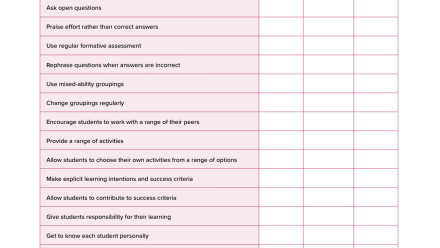Research has shown that students in classrooms with higher expectations learn and achieve more. As educators this probably comes as no big surprise to you or your colleagues. Yet, teacher awareness has not always translated into more classrooms with high expectations. Perhaps the issue is not that most of us don’t believe in high expectations for students, but rather, we aren’t sure how that looks any different than what we already do in the classroom.
What does a high-expectation classroom look like? Here are a few key elements you would likely see in a high-expectation classroom. Does it sound like yours?
- All students are engaged in challenging tasks
- Students are willing to try hard things because the class culture is supportive and feedback is offered with encouragement and kindness.
- Student choice is an integral part of classroom instruction.
- Students set personal goals and are intrinsically motivated to achieve them.
Assessing High Expectations
Based on researcher Christine Rubie-Davies’ work to understand how teacher expectations influence students’ achievement, the Education Hub created a teacher checklist on high-expectation teaching. It offers teachers a way to reflect on their practices with a low-stakes assessment. Take a look at the High Expectations Checklist, reproduced here with permission, and ask yourself how high your expectations of students really are.
Education Hub



